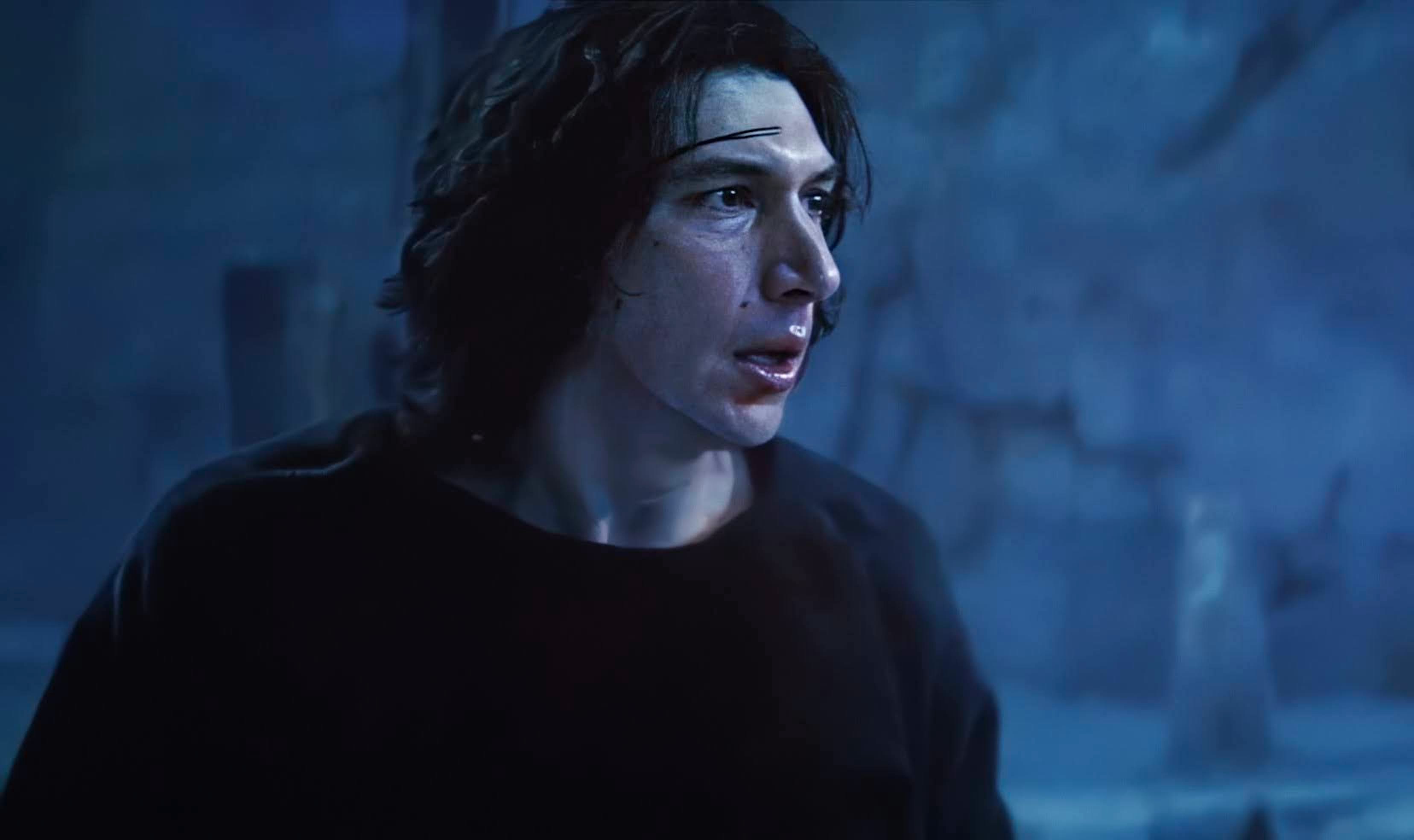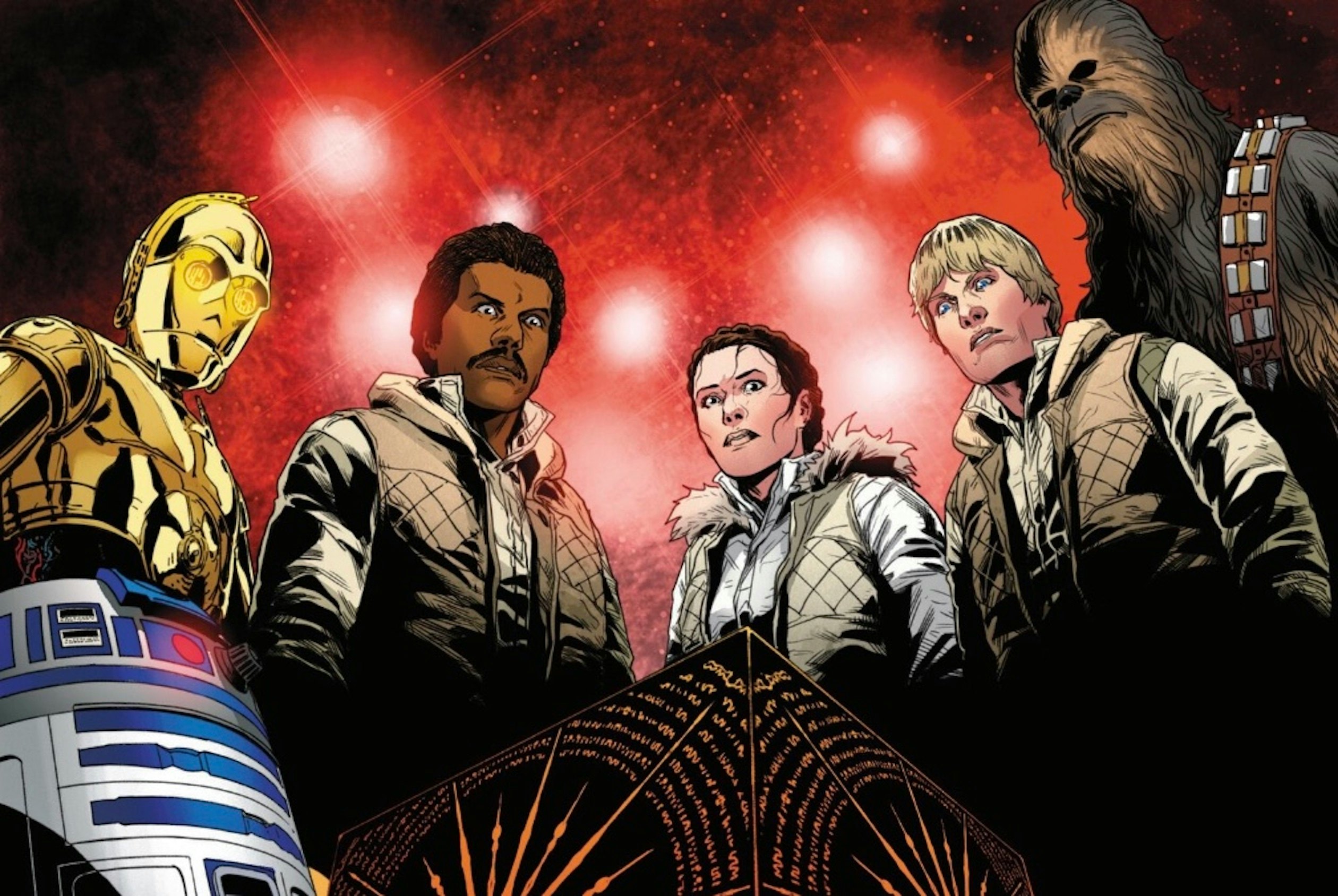
Four years pass between the events of A New Hope and The Empire Strikes Back, but only one year passes between Empire and Return of the Jedi. During this time, while Han Solo was frozen in carbonite, the adventures of the Rebel Alliance continued. Before the current post-2014 real-deal Lucasfilm canon, this missing year was chronicled twice within Star Wars Legends; first by Marvel Comics in the early 1980s and again in 1996 with the Shadows of the Empire multimedia project, which spanned a Dark Horse Comics miniseries, a novel by Steve Perry, and an unforgettable video game for the N64.
But, since January 2020, Marvel Comics has been chronicling these adventures anew, this time, for the official Star Wars record. Now, after four years, this run has concluded with Star Wars #50, and within this thrilling new Star Wars story, we’re officially introduced to a deadly weapon that makes our squeaky-clean classic Alliance heroes closer to the moral grey area of Andor.
Luke tells Ben Solo a story...

Written by Charles Soule, the entirety of Star Wars #50 is framed as a story Luke Skywalker tells a young Ben Solo at some point before the events of The Force Awakens. Luke is seemingly trying to make a larger point with this story, illustrating a time when he and the Alliance grappled with a big ethical dilemma. The story is divided into four parts, with each part borrowing dialogue from A New Hope that references the first Death Star.
The reason why this story evokes the specter of the Death Star is because the core of the tale is all about the Rebel Alliance considering very strongly, to use their own deadly super weapon, one we’ve never heard of, until now.
The Grim Rose could have murdered Palpatine

After following a series of arcane clues, Luke, Lando, Leia, Chewie, C-3PO, and R2-D2 find an ancient weapon known as “The Grim Rose.” The basic idea is that it uses genetic material from a person to create a kind of web that eventually will find that person and take them out. This leads the gang to Naboo because, presumably, some of the Emperor’s genetic material is still on file there from when he was a senator.
But the Grim Rose has a big catch. Through strange, mystical energy, it can find all the people Palpatine has touched, and then, eventually, find him, and destroy him. But as C-3PO says, it won’t just murder him but “every person along the path it has followed to get there.”
Luke immediately sees that this is totally unethical, but Lando doesn’t agree, saying he doesn’t care how many people it takes out to get to Palpatine and that they should “let it run.”
Eventually, of course, Luke busts out a lightsaber and destroys the Grim Rose, preventing it from creating a bunch of collateral damage just to get to Palpatine. This isn’t surprising because we know that the Alliance didn’t take out Palpatine prior to Return of the Jedi. But the moment Luke, Leia, and Lando clash over whether or not to keep the Grim Rose running is probably the first time in a very long time that the classic Rebellion heroes have felt closer to their more Andor-ish counterparts.
Sure, Luke slayed countless people when he destroyed the Death Star, and Leia, Lando, Han, and Chewie are certainly responsible — directly or indirectly — for the slaughter of all sorts of Imperial officers and soldiers. But in this story, they’re given the chance to put their finger on a doomsday button and heartlessly allow it to murder with impunity. It’s a dark dilemma, one that suggests our heroes were changed by their struggle against the Empire more than perhaps the films could ever reveal.
The optimism of Luke Skywalker might seem discordant with the moral grey areas of the Rebellion in Rogue One and Andor. But now, Star Wars has reminded us that this was all part of the same Rebellion, replete with moral compromises even in moments of triumph.




!["[T]he First and Fifth Amendments Require ICE to Provide Information About the Whereabouts of a Detained Person"](https://images.inkl.com/s3/publisher/cover/212/reason-cover.png?w=600)


